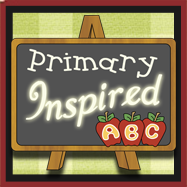Brenda is the fabulous organizer behind the current Guided Math Book Study and she is so awesome that she is joining in for our study of Guiding Readers as well. If you haven't already done so, please head over to her blog to check out the Guided Math book study. I have learned so much from reading this book...I can hardly wait until school starts again to try out all my ideas! (Okay, so that might not be exactly trie...it is after all, only my first day of summer vacation, but the book is still a spectacular read. It will change how you think about your math instruction.)



























2 Brilliant Teaching Thoughts:
Hey Beth,
I'm giving you the Versatile Blogger award! Yea! It's fun to be honored with this. Stop over at my blog and you'll see how to pick it up!
Patty
Second In Line
Beth-Getting to know what cueing systems a reader uses is so important for when you work with them in Guided Reading. If you are working with a reader who gets stuck on a word and you want to coach them through it, you want to prompt them to use the cueing systems that they do not typically use. For example, if you have a child who consistently looks at the pictures and thinks about what makes sense, but does not look to see if the word they chose looks like the word on the page- you will want to prompt them to think about "Does that word match what we see on the page." We wouldn't want to prompt her with "what would make sense" because she already thinks about that on a regular basis, but this time it isn't helping.
To figure out what cueing systems your readers use, you can do a 1 minute running record. I usually choose a focus student a day and conduct a warm running record with them (on a chunk of text they read the day prior) then I do a miscue analysis to see what cueing systems they used. If you need more help with this, let me know. Perhaps I can do a post on it- I have lots of resources I can share.
Stacy
Leading and Reading
Post a Comment
Hello!!
Thank you taking the time to leave a comment.
I truly appreciate it.
Beth